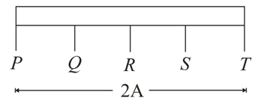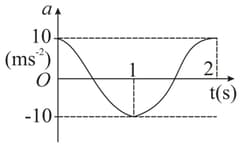B M Sharma Solutions for Chapter: Linear and Angular Simple Harmonic Motion, Exercise 2: CONCEPT APPLICATION EXERCISE
B M Sharma Physics Solutions for Exercise - B M Sharma Solutions for Chapter: Linear and Angular Simple Harmonic Motion, Exercise 2: CONCEPT APPLICATION EXERCISE
Attempt the practice questions on Chapter 5: Linear and Angular Simple Harmonic Motion, Exercise 2: CONCEPT APPLICATION EXERCISE with hints and solutions to strengthen your understanding. PHYSICS FOR JOINT ENTRANCE EXAMINATION WAVES AND THERMODYNAMICS solutions are prepared by Experienced Embibe Experts.
Questions from B M Sharma Solutions for Chapter: Linear and Angular Simple Harmonic Motion, Exercise 2: CONCEPT APPLICATION EXERCISE with Hints & Solutions
A body performs simple harmonic oscillations along the straight line with as the midpoint of Its kinetic energies at and are each one fourth of its maximum value. If find the distance between and

The potential energy between two atoms in a diatomic molecule varies with as where and are positive constants. Find the equivalent spring constant for the oscillation of one atom if the other atom is kept stationary.
(i) The acceleration versus time graph of a particle executing SHM is shown in the following figure. Plot the displacement versus time graph.

(ii) The frequency of oscillation is __________.
(iii) The displacement amplitude is ______.
(iv) At , the velocity of the particle is ______/
(v) The kinetic energy of the particle is maximum at _____ and ______.
(vi) The potential energy is maximum at _______; _______ and _______.
A particle starts oscillating simple harmonically with time period from its equilibrium position. Find the ratio of kinetic energy and potential energy of the particle at the time (time period).
The potential energy of a simple harmonic oscillator of mass in its mean position is If its total energy is and its amplitude is find its time period.
If you start measuring the time from the mean position, after what minimum time the energy of a horizontal spring mass system oscillating with time period is half kinetic and half potential?
A linear harmonic oscillator has a total mechanical energy of . Potential energy of it at mean position is . Find
(i) The maximum kinetic energy
(ii) The minimum potential energy
(iii) The potential energy at extreme positions.
The potential energy of a particle oscillating on axis is given as .
Here is in joules and in metres. Total mechanical energy of the particle is .
(a) State whether the motion of the particle is simple harmonic or not.
(b) Find the mean positive
(c) Find the maximum kinetic energy of the particle.
